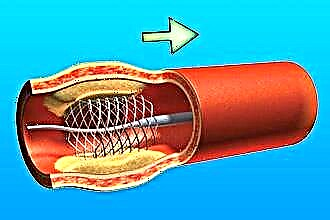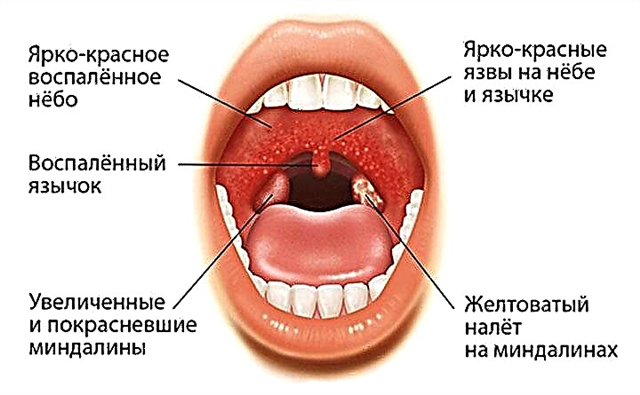Otitis media is an infectious and inflammatory disease in which the anatomical structures of the ear are involved in the pathological process. The incidence rates among the adult population are estimated at hundreds of thousands of cases. Although, according to statistical data, acute forms prevail, a considerable number of registered episodes of otitis media refer to chronic variants of the course. Prevention of otitis media can be primary and secondary, which means preventing the onset of the disease and preventing the transition to a purulent form, if otitis media does develop. Vaccination is one of the preventive measures, but it is necessary to understand whether adult patients can be vaccinated.
About prevention

The definition of "otitis media" implies the defeat of a specific anatomical area of the ear. In this regard, the disease is classified as external, middle and internal otitis media (labyrinthitis). It is possible to isolate forms of otitis media according to the etiological principle only in a generalized sense: as viral, bacterial and fungal.
Talking about the prevention of inflammation is not entirely correct. The inflammatory process develops under the influence of a pathogenic infectious agent and is a condition provoked by an infection, but controlled by the body. Inflammation is a typical reaction to injury that repeats in different patients according to the same principle. This remains true, despite the differences in symptoms caused by immune reactivity, concomitant pathologies, and the type of infectious agent. It is the existence of typical processes that makes it possible to describe the clinical picture of otitis media as "classical" and "atypical", that is, to indicate the expected course of the disease and the course that has changed for some reason. Thus, the choice of vaccine and the possibility of vaccination are determined by the variant of the pathogen, and not by the type of disease.
Otitis media can be caused by a large number of pathogenic microorganisms and viruses. Infection with each of them cannot be prevented by specific prophylaxis. This is not possible for two main reasons:
- lack of necessary vaccines;
- lack of a method for determining the likelihood of infection.
The use of the vaccine can prevent the development of otitis media of pneumococcal etiology.
To explain the choice of vaccine preparation, it is useful to give an example. Influenza vaccination is carried out based on data from the WHO (World Health Organization), which reports information on the strains of the virus that are expected to circulate in the next "influenza season". There are many variants of influenza viruses, but vaccinated patients can only be protected from a few of them. Simply put, the otitis media vaccine cannot cover the entire spectrum of pathogens that can provoke ear inflammation. This definition applies only to pneumococcal infection.
them. Simply put, the otitis media vaccine cannot cover the entire spectrum of pathogens that can provoke ear inflammation. This definition applies only to pneumococcal infection.
About the vaccine
Pneumococcus is a bacterium called Streptococcus pneumoniae, which causes the following diseases:
- pneumonia;
- meningitis;
- sinusitis;
- otitis media.
The named bacterium is one of the most common and common causative agents of otitis media. It is with pneumococcus that the largest number of severe and recurrent forms of inflammatory diseases of the middle ear is associated. Several vaccines have been developed to prevent infection: 23-valent (polysaccharide), 7-valent (conjugated), 10-valent, and 13-valent. Currently, it is possible to purchase and then use the first two vaccines listed.
The polysaccharide 23-valent pneumococcal vaccine PPV23 is suitable for adult patients.
The PPV23 vaccine contains 25 μg of purified capsular polysaccharide of 23 serotypes of the causative agent of pneumococcal infection. The drug is intended for a single intramuscular or subcutaneous injection. You should know the features of the application:
- The vaccine must not be mixed in a syringe with other vaccine preparations.
- The vaccine can be given at the same time as other vaccines if it is injected with a different syringe in a different area of the body.
- A sufficient level of antibodies for immune protection is noted three weeks after the vaccination.
Pneumococcal vaccine, when vaccinated in adults, is considered safe and does not cause significant side effects. Even if it is administered on the same day with a different vaccine (for example, influenza vaccine), the effectiveness of the application remains the same, and the risk of unwanted consequences does not increase.
How acceptable are the side effects:
- redness at the injection site;
- slight swelling and pain at the injection site;
- subfebrile fever.
All these symptoms are observed temporarily, do not require specific therapy and, as a rule, stop on their own after a few hours or days.
Indications and effectiveness
Prevention of otitis media in adults with a vaccine is carried out taking into account the following indications:
- Age over 65.
- Chronic pathologies of the kidneys, liver, heart, lungs.
- Diabetes mellitus, congenital or acquired immunodeficiency (including HIV).
- The need for immunosuppressive therapy.
- The absence of a spleen (asplenia) or its functional failure.
For all of these groups of patients, pneumococcal otitis media is dangerous with severe complications and resistance to antibiotic therapy, therefore vaccination has a great advantage over active treatment using combinations of antibacterial drugs. In addition, vaccinated persons are protected from all forms of diseases that pneumococcus can provoke.
According to research, the duration of the immune defense is 3 to 5 years.
Vaccination of pregnant women
The use of pneumococcal vaccine in pregnant women has been proposed to:
- to reduce the number of episodes of otitis media and other infections of pneumococcal etiology among pregnant women;
- to reduce the number of cases of pneumococcal infections among newborns.
Currently, the question of the use of pneumococcal vaccine for the immunization of women carrying a child remains controversial. The research results indicate that in vaccinated patients there were no significant side effects that threatened the course of pregnancy, the health of the expectant mother and child. However, we must not forget: there is not enough data to allow unconditional approval of vaccination. Therefore, the assessment of the ratio of risk and benefit is carried out on a case-by-case basis.
 Experts are of the opinion that vaccination should not be carried out during pregnancy (if there is no unconditional indication that justifies the likely risk). At the same time, it is recommended to refrain from using the vaccine preparation during the first trimester.
Experts are of the opinion that vaccination should not be carried out during pregnancy (if there is no unconditional indication that justifies the likely risk). At the same time, it is recommended to refrain from using the vaccine preparation during the first trimester.
Non-specific preventive measures
Otitis media usually occurs against the background of contributing factors: trauma, decreased immune reactivity, violation of hygiene rules. Vaccination can only protect the patient against pneumococcal infection. At the same time, the likelihood of otitis media of a different etiology remains high. This necessitates knowledge of how to prevent otitis media without resorting to pharmacological agents:
- Avoid getting water in the ear.
- Refuse to comb your ears with your fingers, hairpins, matches, sharp objects.
- Refuse to use cotton swabs deep in the ear canal.
- Only the visible part of the ear canal and the auricle should be cleared of sulfur.
- In case of nasal congestion, blow your nose, covering one nostril and removing mucus from each nostril in turn.
Ear hygiene should be conscious - constant skin irritation, inaccurate cleaning with chopsticks provokes an infectious and inflammatory process.
Do not expose the ear canal to daily cleaning - in a healthy person, it cleans itself independently. Ears should be protected from injury - mechanical, thermal, chemical. Purposeful cleansing of the lumen of the ear canal is necessary only in the presence of secretions. Otitis prevention is based on simple recommendations that do not require complex manipulations and should be known to every patient.



